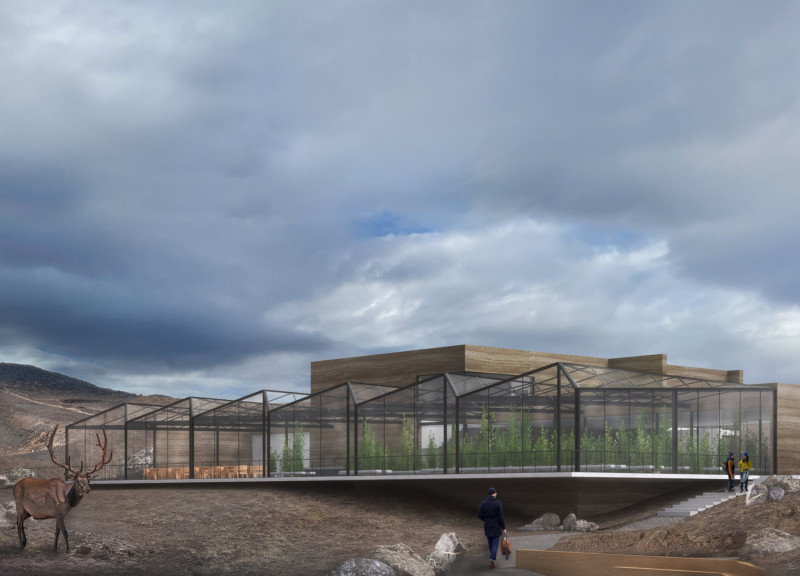5 key facts about this project
The greenhouse restaurant in Iceland responds to the challenges of its rocky, snowy environment, where growing food is difficult. It serves two main purposes: a place for dining and a working greenhouse to support local agriculture. The design seeks to connect with the landscape, creating harmony between the structure and its surroundings.
Site Integration
The layout is carefully designed to minimize disruption to the natural terrain, using the slope to its advantage. The building sits at the highest point, offering expansive views of Lake Mývatn and Hverfjall volcano. Visitors are directed along pathways that lead from the parking area to the entrance, encouraging a connection with the beauty of the landscape.
Spatial Arrangement
Inside the restaurant, space is used effectively. Upon entering, guests follow a path that leads through both the dining area and the greenhouse. Tables are positioned to take advantage of the views outside. This setup enhances the dining experience while connecting people to the natural environment. The design allows for ample light and space, inviting visitors to relax and enjoy.
Material Considerations
Material choices play a key role in the project. Rammed earth is used in the structure, establishing a direct link to the landscape while aiding thermal performance. Reinforced concrete forms a solid foundation, providing stability against the region's geological changes. Large glass panels are included throughout the design, allowing natural light to fill the interior and making the outside scenery a focal point.
Functional Mechanisms
The greenhouse restaurant includes practical systems aimed at sustainability. Geothermal heating is employed to manage the indoor climate efficiently, while rainwater collection systems promote responsible resource use. These features ensure that the restaurant not only meets operational needs but also aligns with sustainable practices and enhances agricultural productivity.
The roof design is notable, incorporating a glass enclosure that invites sunlight in. This creates a greenhouse effect, helping to extend the growing season for a range of crops. The approach emphasizes the importance of integrating agricultural practices with dining, showcasing both functionality and engagement with the environment.






















































